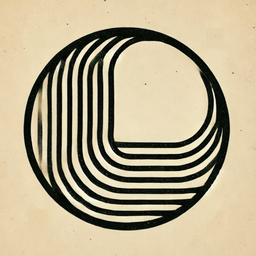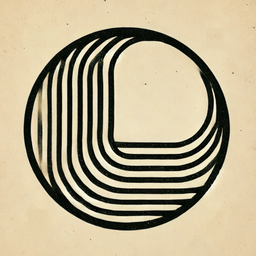The Shadow Work Journal: A Scientific Approach to Self-Healing and Personal Growth
Discover the science behind shadow work journaling. Learn Dr. Pennebaker's evidence-based protocol backed by 200+ studies, Jung's original framework, and the neuroscience of emotional healing. Transform trauma into growth with this proven 4-day writing method.

Introduction: Where Ancient Wisdom Meets Modern Science
In the constant flow of modern life, our unresolved emotions, traumas, and fears often remain buried, overshadowing our decisions and reactions. The concept of "shadow work" – a term coined by Swiss psychiatrist Carl Jung in the early 20th century – has evolved from a psychoanalytic theory into a mainstream practice for personal development. Today, this ancient wisdom converges with cutting-edge neuroscience through the work of researchers like Dr. James Pennebaker, whose scientifically validated journaling protocol has revolutionized our understanding of emotional processing.
Shadow work aims to bring those hidden parts of ourselves to light, helping us heal from within. If you've been exploring ways to understand your inner self more deeply, the shadow work journal may offer a powerful path forward – one that's now backed by over 200 peer-reviewed studies spanning four decades of research.
The Historical Foundations: Jung's Revolutionary Discovery
Carl Jung first introduced the concept of the "shadow" in his 1938 work "Psychology and Religion," describing it as the repressed, unconscious aspects of the personality that the conscious ego doesn't identify with. Jung observed that these shadow elements don't simply disappear when ignored; instead, they influence our behavior in unconscious ways, often manifesting as projections onto others or emerging during moments of stress.
Jung's original framework proposed that the shadow contains not only our perceived negative traits but also undeveloped aspects of the self – what he called the "golden shadow." This comprehensive view recognized that personal growth required integrating both light and dark aspects of the psyche. Jung wrote extensively about this in his Red Book (Liber Novus), documenting his own descent into the unconscious between 1913 and 1930.
The traditional Jungian approach to shadow work involved dream analysis, active imagination, and analytical psychology sessions. However, these methods remained largely within the realm of depth psychology until the 1980s, when a breakthrough in experimental psychology would provide empirical validation for what Jung had intuited decades earlier.
The Scientific Revolution: Pennebaker's Paradigm Shift
In 1986, Dr. James Pennebaker and his colleague Sandra Beall conducted a groundbreaking study at Southern Methodist University that would fundamentally change our understanding of emotional processing. Published in the Journal of Abnormal Psychology, their research demonstrated that writing about traumatic experiences for just 15-20 minutes over four consecutive days led to significant improvements in both physical and mental health.
What made Pennebaker's discovery revolutionary was its measurability. Participants who engaged in expressive writing showed:
- 50% reduction in physician visits over the following months
- Improved immune function markers, including increased T-lymphocyte activity
- Lower cortisol levels indicating reduced stress
- Enhanced liver enzyme function
- Reduced blood pressure in hypertensive patients
Subsequent research by Pennebaker and his team at the University of Texas at Austin expanded these findings. A 1997 study published in the Journal of the American Medical Association showed that patients with rheumatoid arthritis and asthma experienced significant symptom reduction after engaging in the writing protocol. By 2006, a meta-analysis by Frattaroli examining 146 studies confirmed the robust effects across diverse populations.
The Neuroscience of Shadow Work: What Happens in Your Brain
Modern neuroscience has revealed the precise mechanisms through which shadow work journaling creates change. Dr. Matthew Lieberman's UCLA neuroimaging studies (2007-2013) using fMRI technology showed that putting feelings into words – what he termed "affect labeling" – activates the right ventrolateral prefrontal cortex while simultaneously reducing activity in the amygdala, the brain's fear center.
This neurological shift is crucial for shadow work. When we confront shadow material through writing, several key brain processes occur:
1. Prefrontal Cortex Engagement: Initially, writing about trauma causes a temporary decrease in prefrontal cortex activity – what researchers call "cognitive load." However, repeated writing sessions strengthen prefrontal engagement, allowing for better emotional regulation and narrative coherence.
2. Memory Reconsolidation: Research by Dr. Karim Nader at McGill University (2000) demonstrated that each time we recall a memory, it becomes temporarily malleable. Shadow work journaling leverages this process, allowing traumatic memories to be "updated" with new understanding and reduced emotional charge.
3. Default Mode Network Integration: Dr. Marcus Raichle's work at Washington University (2001) identified the Default Mode Network (DMN), active during introspection. Shadow work journaling engages the DMN in a structured way, facilitating integration of unconscious material into conscious awareness.
4. Neuroplasticity Enhancement: Studies by Dr. Alvaro Pascual-Leone at Harvard (2005) showed that focused attention during writing creates new neural pathways, literally rewiring the brain's response to emotional triggers.
The Complete Shadow Work Journal Protocol: A Scientific Approach
Based on Pennebaker's original research and subsequent refinements, here's the scientifically validated protocol for shadow work journaling:
Phase 1: Preparation (Day 0)
- Environment: Choose a private, quiet space where you won't be interrupted
- Timing: Select the same time each day for consistency (research suggests evening writing may be most beneficial)
- Materials: Use whatever medium feels comfortable – handwriting activates different brain regions than typing, but both are effective
Phase 2: The Four-Day Protocol (Days 1-4)
Day 1: Factual Exploration Write continuously for 15-30 minutes about the facts of your chosen experience. Include:
- What happened (concrete details)
- Who was involved
- Timeline of events
- Sensory memories (sights, sounds, smells)
Day 2: Emotional Excavation Focus on emotions felt during and after the experience:
- Primary emotions (fear, anger, sadness)
- Secondary emotions (shame, guilt, regret)
- Body sensations associated with these emotions
- How these emotions have evolved over time
Day 3: Pattern Recognition Explore connections and patterns:
- Similar experiences from your past
- Recurring themes in your life
- How this experience relates to current challenges
- Family or cultural patterns that may be relevant
Day 4: Integration and Meaning-Making Synthesize your insights:
- New understanding gained
- Lessons learned
- How you've grown from the experience
- Future intentions and commitments
Phase 3: Post-Protocol Integration (Days 5-7)
- Review your writings once without editing
- Note any shifts in perspective or emotion
- Consider sharing insights with a trusted friend or therapist
- Allow at least one week before repeating with new material
Clinical Evidence: Beyond Anecdotal Success
The scientific validation of shadow work journaling extends far beyond initial studies. Recent research has demonstrated specific applications:
Trauma Recovery: A 2018 study in Psychological Science by Dr. Denise Sloan at Boston University showed that written exposure therapy (based on Pennebaker's protocol) was as effective as cognitive processing therapy for PTSD, with lower dropout rates.
Addiction Recovery: Research published in Addiction Science & Clinical Practice (2019) found that individuals in substance abuse recovery who engaged in expressive writing showed 27% lower relapse rates at six-month follow-up.
Chronic Pain Management: A 2020 meta-analysis in Pain Medicine reviewed 12 studies and found consistent reduction in pain intensity and improved functional capacity among chronic pain patients using expressive writing.
Depression and Anxiety: The Journal of Affective Disorders (2021) published findings showing that online expressive writing interventions reduced depression scores by an average of 35% and anxiety scores by 22% over eight weeks.
The Shadow Work Difference: Why This Isn't Just Journaling
Unlike conventional journaling practices, shadow work journaling specifically targets unconscious material. This distinction is crucial:
Gratitude Journaling focuses on positive experiences and may actually suppress shadow material. Research by Dr. Sonja Lyubomirsky at UC Riverside (2006) showed that while gratitude practices increase happiness, they don't address underlying psychological wounds.
Morning Pages (Julia Cameron's method) emphasize stream-of-consciousness writing but lack the structured approach necessary for trauma processing. They're excellent for creativity but less effective for shadow integration.
Cognitive Behavioral Thought Records focus on challenging thoughts but may intellectualize emotions rather than fully processing them. Dr. Stefan Hofmann's research at Boston University (2012) suggests combining CBT with expressive writing enhances outcomes.
Shadow work journaling, particularly when following Pennebaker's protocol, uniquely combines emotional expression with cognitive processing, creating what researchers call "cognitive-emotional integration."
Common Challenges and Scientific Solutions
Research has identified several challenges in shadow work journaling and evidence-based solutions:
Emotional Overwhelm: Studies show that breaking traumatic experiences into smaller segments and alternating between writing and grounding exercises reduces overwhelm while maintaining therapeutic benefit.
Resistance to Writing: Research by Dr. Joshua Smyth at Pennsylvania State University (2008) found that even reluctant writers benefit from the protocol. Starting with just 10 minutes can build tolerance.
Retraumatization Concerns: A 2016 study in Clinical Psychological Science found that when following the structured protocol, less than 3% of participants experienced lasting distress, and these individuals typically had pre-existing PTSD requiring professional support.
The Future of Shadow Work: Emerging Research
Current research is exploring new frontiers in shadow work journaling:
- Neuroplasticity Windows: Dr. Gül Dölen's work at Johns Hopkins (2019) suggests certain neurochemical states may enhance the brain's capacity for change during shadow work
- AI-Assisted Shadow Work: Stanford University researchers are developing AI tools to identify shadow patterns in journal entries while maintaining privacy
- Collective Shadow Work: Dr. Thomas Hübl's research on collective trauma suggests group journaling protocols may help heal societal shadows
Integrating Shadow Work into Modern Life
The beauty of scientifically validated shadow work journaling lies in its accessibility. Unlike traditional therapy or intensive workshops, this practice requires only:
- 15-30 minutes daily for four days
- Basic writing materials or digital device
- Commitment to honest self-exploration
- Willingness to face uncomfortable truths
Research consistently shows that the benefits compound over time. Participants who engage in the protocol quarterly report sustained improvements in emotional regulation, relationship quality, and overall life satisfaction.
Conclusion: The Convergence of Ancient Wisdom and Modern Science
Dr. Pennebaker's protocol isn't just another journaling method – it represents the convergence of Jung's profound insights about the human psyche with rigorous scientific methodology. With over 200 peer-reviewed studies validating its effectiveness, this approach to shadow work offers the most scientifically substantiated path to processing emotional pain and fostering personal growth.
The protocol's elegance lies in its simplicity: just 15-30 minutes a day over four days can initiate profound changes in both brain structure and function. For anyone interested in the healing potential of shadow work, this scientifically backed method provides a structured, evidence-based approach to confronting and integrating the hidden aspects of the self.
Life Note users have already begun their shadow work journey, journaling with guidance from Carl Jung – the pioneer of shadow work. With Life Note, users can explore the depths of their unconscious, tackling unresolved emotions, suppressed memories, and hidden desires. The combination of Jungian psychology and the scientifically backed Pennebaker protocol offers a transformative journaling experience that helps users not only understand their shadows but also integrate them for a more balanced and fulfilled life.
The marriage of Jung's visionary understanding of the psyche with Pennebaker's empirical validation creates a powerful tool for modern seekers. Whether you're working through trauma, stress, or simply seeking greater self-awareness, shadow work journaling guided by scientific principles offers a proven path to discovering your true self and moving toward authentic personal growth.
If you're ready to begin your journey into the shadows with the support of both ancient wisdom and modern science, start your journal today with Life Note. It might just be the most transformative practice you ever try.
Explore More






